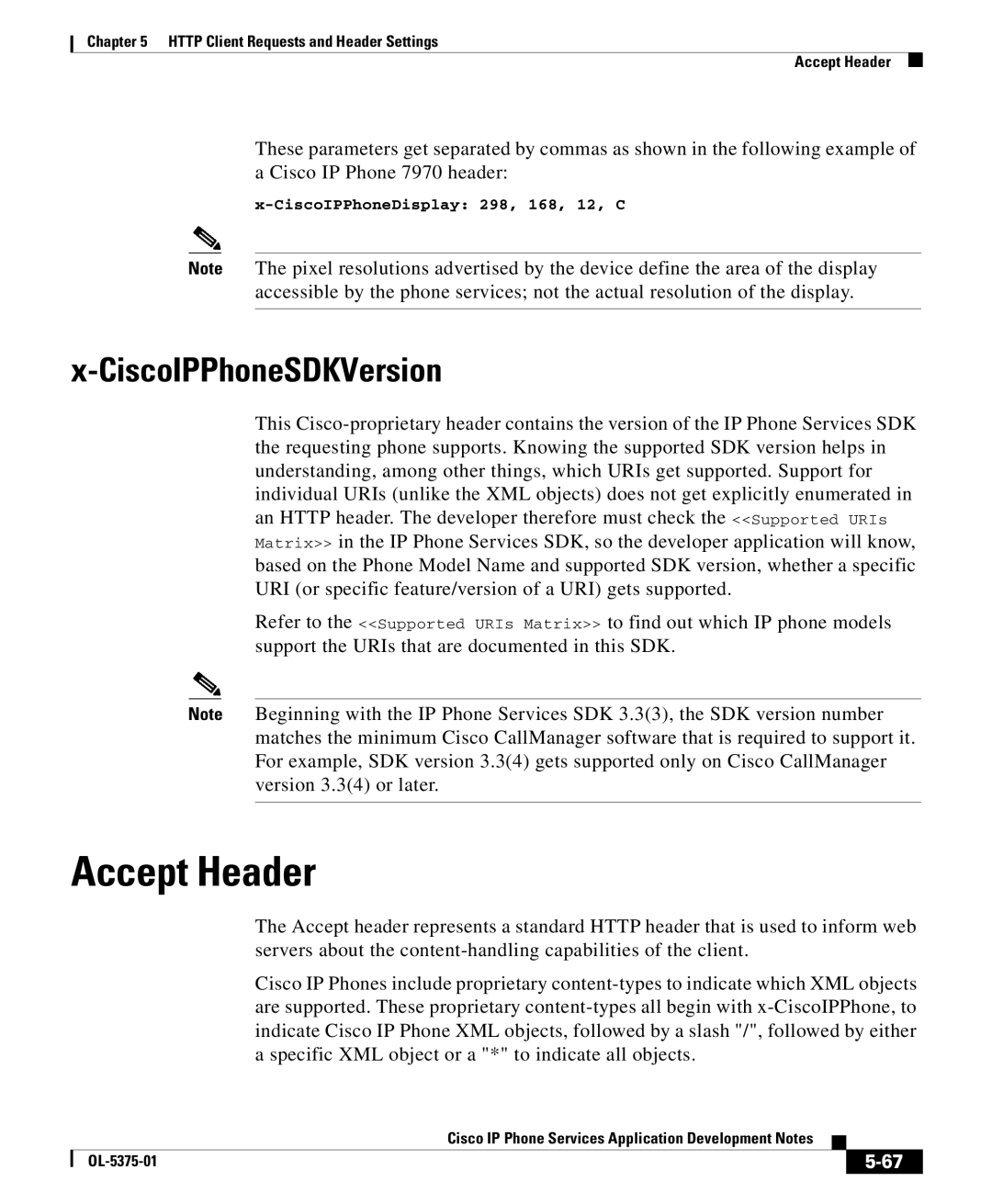
Chapter 5 HTTP Client Requests and Header Settings
Accept Header
These parameters get separated by commas as shown in the following example of a Cisco IP Phone 7970 header:
Note The pixel resolutions advertised by the device define the area of the display accessible by the phone services; not the actual resolution of the display.
x-CiscoIPPhoneSDKVersion
This
Matrix>> in the IP Phone Services SDK, so the developer application will know, based on the Phone Model Name and supported SDK version, whether a specific URI (or specific feature/version of a URI) gets supported.
Refer to the <<Supported URIs Matrix>> to find out which IP phone models support the URIs that are documented in this SDK.
Note Beginning with the IP Phone Services SDK 3.3(3), the SDK version number matches the minimum Cisco CallManager software that is required to support it. For example, SDK version 3.3(4) gets supported only on Cisco CallManager version 3.3(4) or later.
Accept Header
The Accept header represents a standard HTTP header that is used to inform web servers about the
Cisco IP Phones include proprietary
|
| Cisco IP Phone Services Application Development Notes |
|
|
|
|
| ||
|
|
| ||
|
|
|
